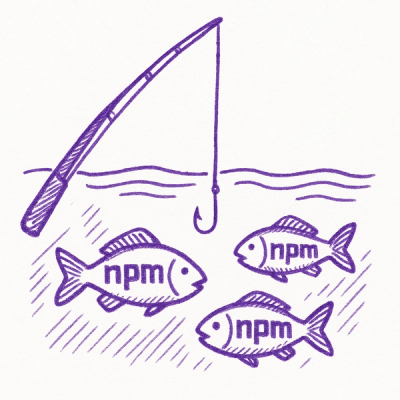Pageable inline keyboard for pyTelegramBotAPI (telebot)
A library for pyTelegramBotAPI that allows you to display data in the format of a pageable inline keyboard.
Installation
You can use pip to install this library.
pip install telebot-inline-pagination
Usage
Step 1. Import necessary libraries and connect Telegram token
from telebot import TeleBot
bot = TeleBot('TOKEN', parse_mode=None)
from telebot.types import CallbackQuery
from telebot_inline_pagination import Keyboard
Step 2. Define the parameters
Required parameters
data: Dataset in "list of tuples" format, without headers: [(a1, b1), (a2, b2), (a3, b3)].
text_message: Message displayed above the keyboard.
data = [
('Hartsfield-Jackson Atlanta International Airport', 'ATL/KATL', 'Atlanta, Georgia, United States'),
("O'Hare International Airport", 'ORD/KORD', 'Chicago, Illinois, United States'),
('Dallas/Fort Worth International Airport', 'DFW/KDFW', 'Coppell, Euless, Grapevine, and Irving, Texas, United States'),
('Denver International Airport', 'DEN/KDEN', 'Denver, Colorado, United States'),
('Charlotte Douglas International Airport', 'CLT/KCLT', 'Charlotte, North Carolina, United States'),
('Los Angeles International Airport', 'LAX/KLAX', 'Los Angeles, California, United States'),
('Harry Reid International Airport', 'LAS/KLAS', 'Paradise, Nevada, United States'),
('Phoenix International Airport', 'PHX/KPHX', 'Phoenix, Arizona, United States'),
('Miami International Airport', 'MIA/KMIA', 'Miami-Dade County, Florida, United States'),
('George Bush Intercontinental Airport', 'IAH/KIAH', 'Houston, Texas, United States')
]
text_message = 'Demo'
Optional parameters
row_width: The number of buttons per row (from 1 to 3, by default - 1).
rows_per_page: The number of rows of buttons on one page, excluding the navigation bar (by default - 5).
text_index: Column index - data source for button titles (by default - 0).
callback_index: Column index - data source for callback-function (by default - 0).
button_text_mode: The number of the mode responsible for the format of the displayed text on the buttons:
- 0 or None (by default) - The button displays data and has callback data from the column index 0
- 1 - The button displays only data from the text_index column
- 2 - The button displays data from the text_index column, and in brackets - data from the callback_index column
- 3 - The button displays data from the callback_index column, and in brackets - data from the text_index column
next_page: Content of the button to go to the next page (by default - '--->').
previous_index: Content of the button to go to the previous page (by default - '<---').
TEXT_INDEX = 0
CALLBACK_INDEX = 1
BUTTON_TEXT_MODE = 2
ROW_WIDTH = 1
ROWS_PER_PAGE = 3
NEXT_PAGE = '>'
PREVIOUS_PAGE = '<'
Step 3. Creating the pageable keyboard instance
The standard pageable keyboard instance looks like this:
Keyboard(chat_id=message.chat.id, data=data, row_width=ROW_WIDTH, rows_per_page=ROWS_PER_PAGE, button_text_mode=BUTTON_TEXT_MODE, text_index=TEXT_INDEX, callback_index=CALLBACK_INDEX, next_page=NEXT_PAGE, previous_page=PREVIOUS_PAGE)
In this example, the instance is written to the variable keyboards to ensure multithreading:
keyboards = []
...
json = {"id": message.chat.id, "object": Keyboard(chat_id=message.chat.id, data=data, row_width=ROW_WIDTH, rows_per_page=rows_per_page, button_text_mode=button_text_mode, text_index=text_index, callback_index=callback_index)}
keyboards.append(json)
Step 4. Creating the message handler for pageable keyboard
The standard message handler for pageable keyboard looks like this:
bot.send_message(message.from_user.id, text_message, reply_markup=Keyboard.send_keyboard())
In this example, the keyboard calls using the /start command. Also,
first, when using the /start command, all previously created instances are deleted. Second, a new instance is added to the message handler.
@bot.message_handler(commands=['start'])
def demo_pagination(message):
for i, j in enumerate(keyboards):
if j["id"] == message.chat.id:
del keyboards[i]
json = {"id": message.chat.id, "object": Keyboard(chat_id=message.chat.id, data=data, row_width=ROW_WIDTH, rows_per_page=ROWS_PER_PAGE, button_text_mode=BUTTON_TEXT_MODE, text_index=TEXT_INDEX, callback_index=CALLBACK_INDEX, next_page=NEXT_PAGE, previous_page=PREVIOUS_PAGE)}
keyboards.append(json)
for i in keyboards:
if i["id"] == message.chat.id:
bot.send_message(message.from_user.id, text_message, reply_markup=i["object"].send_keyboard())
Step 5. Creating the callback query handler for pageable keyboard
The standard callback query handler for pageable keyboard looks like this:
bot.edit_message_text(text_message, reply_markup = Keyboard.edit_keyboard(call), chat_id = call.message.chat.id, message_id = call.message.message_id)
In this example, we use the current chat id to find the required instance in the keyboards list and launch the callback query handler. Also, we use the send_message command to receive a message with information when the result button is clicked.
@bot.callback_query_handler(func=lambda call: True)
def demo_pagination_handler(call: CallbackQuery):
if call.data in ('previous_page', 'next_page'):
for i in keyboards:
if i["id"] == call.message.chat.id:
bot.edit_message_text(text_message, reply_markup = i["object"].edit_keyboard(call), chat_id = call.message.chat.id, message_id = call.message.message_id)
for i in data:
if call.data == i[CALLBACK_INDEX]:
bot.send_message(
call.message.chat.id,
'Airport: ' + i[0] + ' (' + i[1] + ')' + '\n' +
'Address: ' + i[2]
)
Full example
In this example, the code implements multithreading: the bot can be used by several people at the same time without interfering with each other.
from telebot import TeleBot
bot = TeleBot('TOKEN', parse_mode=None)
from telebot.types import CallbackQuery
from telebot_inline_pagination import Keyboard
data = [
('Hartsfield-Jackson Atlanta International Airport', 'ATL/KATL', 'Atlanta, Georgia, United States'),
("O'Hare International Airport", 'ORD/KORD', 'Chicago, Illinois, United States'),
('Dallas/Fort Worth International Airport', 'DFW/KDFW', 'Coppell, Euless, Grapevine, and Irving, Texas, United States'),
('Denver International Airport', 'DEN/KDEN', 'Denver, Colorado, United States'),
('Charlotte Douglas International Airport', 'CLT/KCLT', 'Charlotte, North Carolina, United States'),
('Los Angeles International Airport', 'LAX/KLAX', 'Los Angeles, California, United States'),
('Harry Reid International Airport', 'LAS/KLAS', 'Paradise, Nevada, United States'),
('Phoenix International Airport', 'PHX/KPHX', 'Phoenix, Arizona, United States'),
('Miami International Airport', 'MIA/KMIA', 'Miami-Dade County, Florida, United States'),
('George Bush Intercontinental Airport', 'IAH/KIAH', 'Houston, Texas, United States')
]
text_message = 'Demo'
BUTTON_TEXT_MODE = 2
TEXT_INDEX = 0
CALLBACK_INDEX = 1
ROW_WIDTH = 1
ROWS_PER_PAGE = 3
NEXT_PAGE = '>'
PREVIOUS_PAGE = '<'
keyboards = []
@bot.message_handler(commands=['start'])
def demo_pagination(message):
for i, j in enumerate(keyboards):
if j["id"] == message.chat.id:
del keyboards[i]
json = {"id": message.chat.id, "object": Keyboard(chat_id=message.chat.id, data=data, row_width=ROW_WIDTH, rows_per_page=ROWS_PER_PAGE, button_text_mode=BUTTON_TEXT_MODE, text_index=TEXT_INDEX, callback_index=CALLBACK_INDEX, next_page=NEXT_PAGE, previous_page=PREVIOUS_PAGE)}
keyboards.append(json)
for i in keyboards:
if i["id"] == message.chat.id:
bot.send_message(message.from_user.id, text_message, reply_markup=i["object"].send_keyboard())
@bot.callback_query_handler(func=lambda call: True)
def demo_pagination_handler(call: CallbackQuery):
if call.data in ('previous_page', 'next_page'):
for i in keyboards:
if i["id"] == call.message.chat.id:
bot.edit_message_text(text_message, reply_markup = i["object"].edit_keyboard(call), chat_id = call.message.chat.id, message_id = call.message.message_id)
for i in data:
if call.data == i[CALLBACK_INDEX]:
bot.send_message(
call.message.chat.id,
'Airport: ' + i[0] + ' (' + i[1] + ')' + '\n' +
'Address: ' + i[2]
)
bot.infinity_polling()
Result





